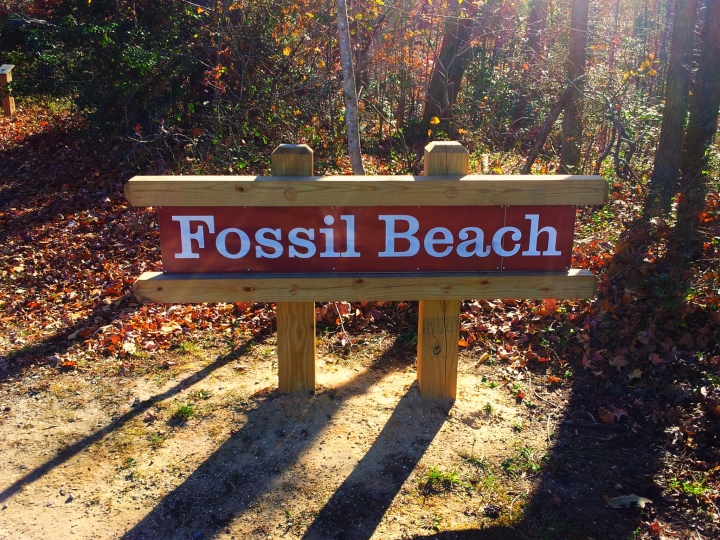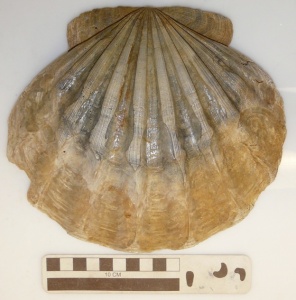
Did you know Virginia has a state fossil? Probably not. It’s the Chesapecten jeffersonius, named after Thomas Jefferson, who, as it turns out, dabbled in paleontology when he wasn’t building, politicking, or wine-making.
According to the Virginia Department of Education1, the C. jeffersonius “is a large extinct species of scallop that dates to about 4.5 million years ago. It was the first fossil ever described in North America,” by way of an illustration by Martin Lister in 1687. The Virginia Museum of Natural History (VMNH) in Martinsville has more information you may be interested in reading.

FOSSIL HUNTING: RIVERS
River banks are excellent places to search for fossils, but be aware of private vs. public land. If you’re walking a river beach above the low tide line in Virginia, you’re trespassing.
– The James River –
The C. jeffersonius can be found along the James River in Surry and York Counties (read the link from VMNH above). A trip to Chippokes Plantation State Park is a great place to start on the James. Guided fossil walks are offered quite regularly; check the calendar.
– The Potomac River –
Fossilized shark teeth turn up all the time on the banks of the Potomac River at Westmoreland State Park in Montross. In fact, State Park officials have provided a ready-to-go exploration backpack for your expedition. Go to the park visitor center to pick one up. It includes a magnifying glass and sand sifter, as well as other accoutrements for birding and insect identification. Check out their post on “megalodonning” at Westmoreland, Chippokes, and York River State Parks.
Sharks Tooth Island (Hollis Island) sounds like an obvious place to look for teeth, but it’s privately owned and access is fee-based.
Colonial Beach also turns up shark teeth. The best times to hunt any river site is off-season when there aren’t many (or any) people doing the same thing.
* Note that excavating and digging along cliffs is dangerous, and that is why fossil hunters may no longer access areas like Stratford Cliffs. More tips for hunting along the Potomac River > FossilGuy.com
COOL FOSSIL FINDS, BUT NO TRESPASSING
Private lands have held a rich bounty of treasures for scientists to unearth, but … they’re private lands. Do not attempt to explore.
– Carmel Church Quarry –
The Martin Marietta Carmel Church quarry site in Caroline County has been the gift that keeps giving. In a Washington Post article from 2011, then-VMNH paleontologist Dr. Alton Dooley said “The most striking thing is the sheer number of bones and teeth that are packed in such a small area. In 20 years, we’ve only excavated about 4,000 square feet, and we’ve pulled out tens of thousands of specimens.” One such specimen was found in 1990: Eobalaenoptera harrisoni, a newly discovered whale species similar to a humpback whale. See a resin cast of the whale skeleton on display at the Caroline County Visitor Center and also at the VMNH.
TIME TO HUNT!
Get the kids excited for the hunt by printing off free fossil coloring pages and worksheets for the drive. Bring bottles of water to stay hydrated and a few simple tools: sand sifter and bucket to collect your treasures. Remember, no cliffs and no private property!
1Virginia Department of Education. (2012). Science Enhanced Scope and Sequence – Grade 2. Retrieved from http://www.doe.virginia.gov/testing/sol/standards_docs/science/2010/lesson_plans/grade2/living_sys/sess_2-5d.pdf
Featured image courtesy of Virginia State Parks.

I LIKE IT
LikeLike
I like this fossil page.
LikeLike
this is so cool i hope i get to learn more about this.
LikeLike
YA RIGHT LIKE SO COOL…
LikeLike
so coooooolll :>
LikeLike
Very helpful ^w^
LikeLike
its the best ever you need to go to this place just kidding its the worst place ever there are no fossil people are taking them home and the workers are so outrageous
LikeLike
i love it
LikeLike